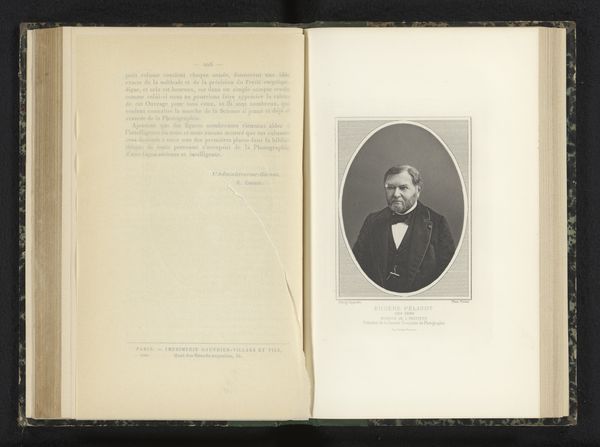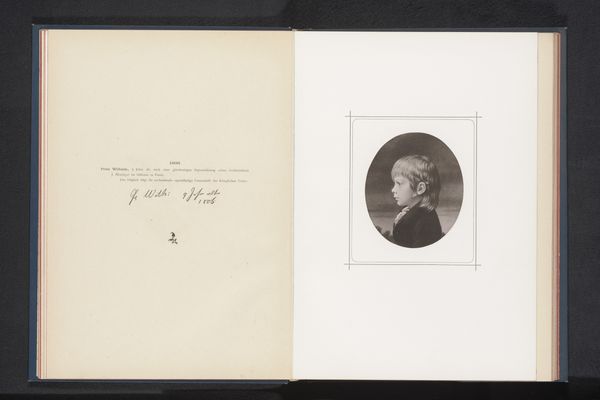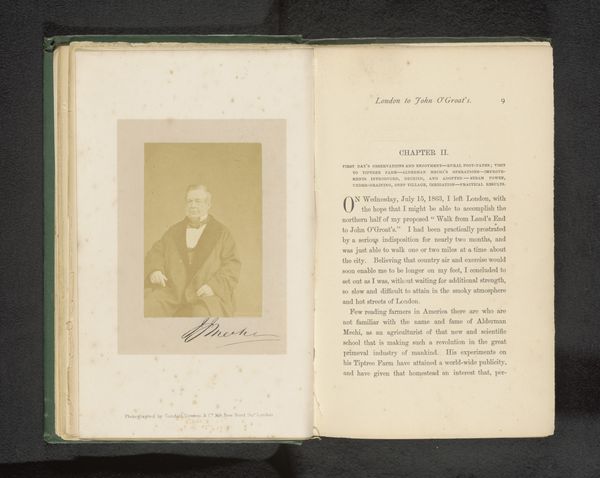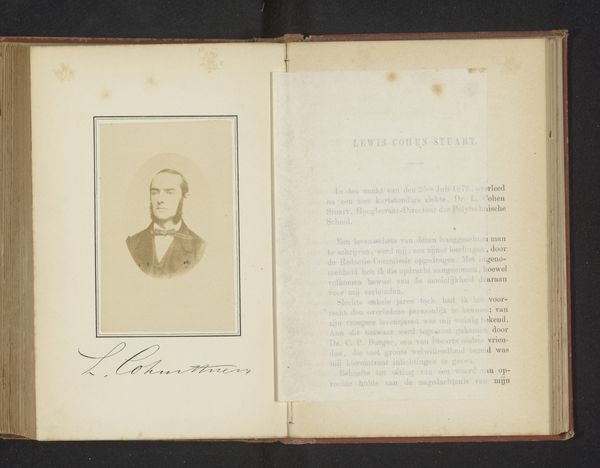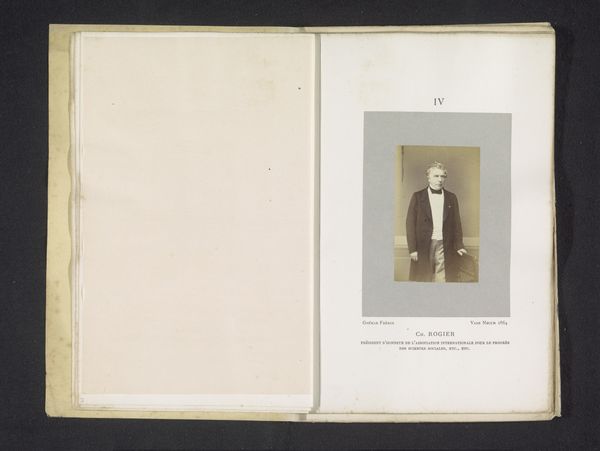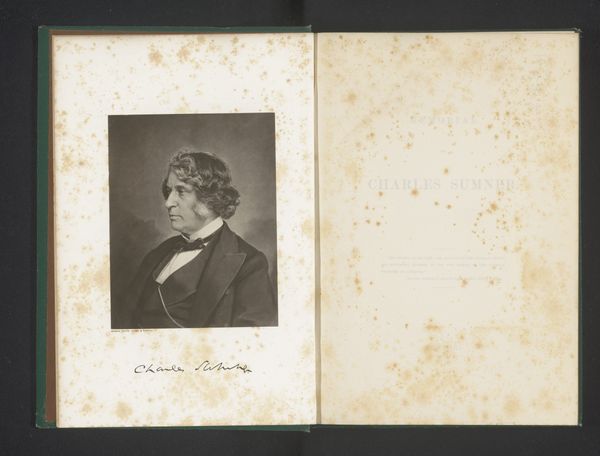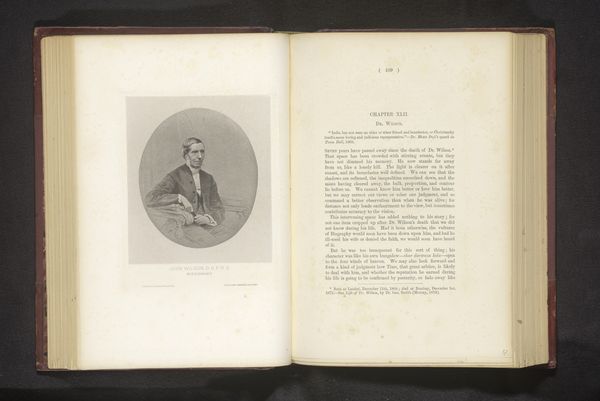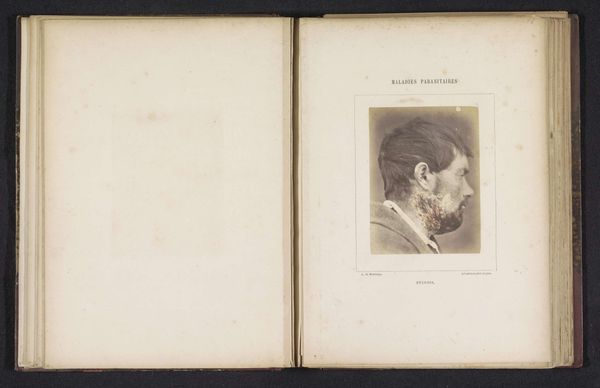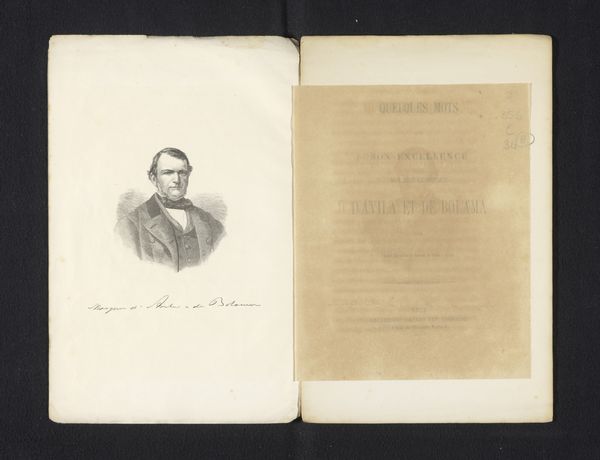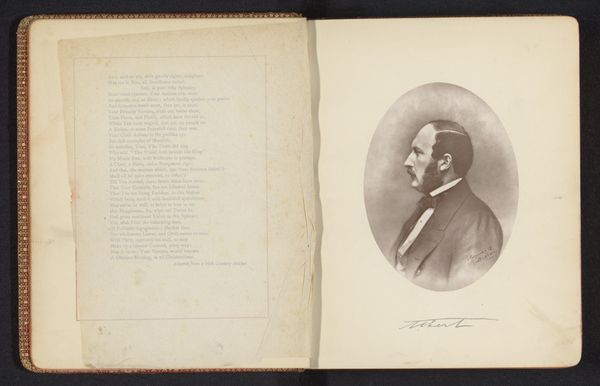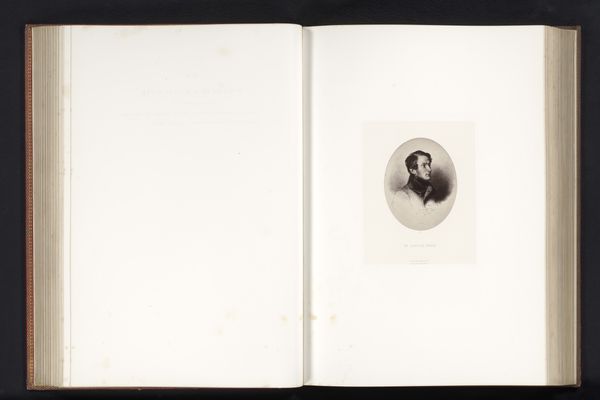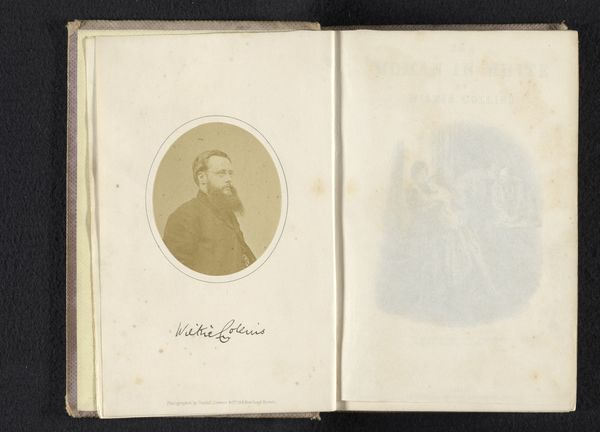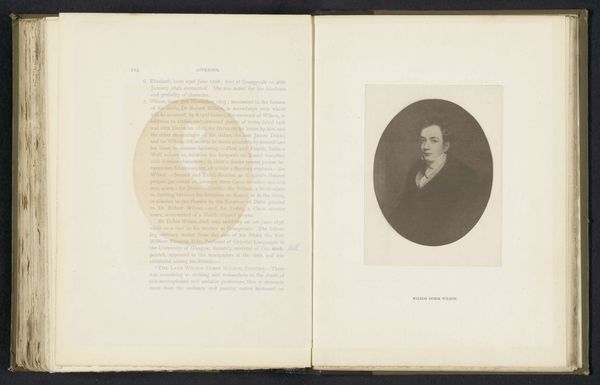
photography, albumen-print
#
portrait
#
photography
#
albumen-print
Dimensions: height 96 mm, width 68 mm
Copyright: Rijks Museum: Open Domain
Curator: This albumen print, titled "Portret van Frederick William Robertson", predates 1853, and presents a fascinating visual document of the Victorian era. What are your first thoughts? Editor: There’s a distinct melancholy to it. The tones are muted, almost sepia-toned, and the man’s expression is serious, introspective. It’s as if he’s gazing beyond the viewer, lost in thought. Curator: Indeed. The oval framing and the book-like presentation also contribute to a sense of intimacy. Note the inscription: "Ever yr. affectionate minister, Fred. W. Robertson". The gesture suggests this was perhaps a personal memento. The oval format itself feels like a window onto a contained world. Editor: The very presence of it within an album signals something about identity and relationships in that era. Who kept such albums? What social circles did they belong to? Robertson himself, based on the inscription, must have been a significant figure to the recipient of this image. How would such an image have been used to solidify relationships? Curator: Those are vital questions. As an image, portraits hold immense psychological weight—reflecting the subject’s social standing, personality, and aspirations. Robertson's gaze projects both confidence and a hint of vulnerability. His dress also signifies something specific, don't you think? Editor: Absolutely, the neat bow tie, the dark suit, everything points to a respectability that also signifies a clear class. Yet it's the melancholic undertone that challenges the image and elevates it from a straightforward representation of power. Perhaps the portrait offers a space of self-reflection not wholly afforded in more official portraits. The inscription humanizes this, connecting religious authority and intimacy. Curator: And the photograph being presented in this book form underscores how images were valued, and preserved—becoming integral to familial and even larger cultural narratives. These albums were visual chronicles of an age, conveying aspirations and projecting a carefully constructed social identity. Editor: Precisely. And, by reflecting on such imagery, we start understanding both the intentional and the unconscious aspects of identity construction that photographs captured. Curator: A fruitful meditation on Victorian imagery, reminding us how photography not only documented an era but actively participated in constructing its self-image. Editor: Agreed. Visual cues give the interpreter something of immense value about power, gender, intimacy, and loss, connecting the present with historical memory.
Comments
No comments
Be the first to comment and join the conversation on the ultimate creative platform.
